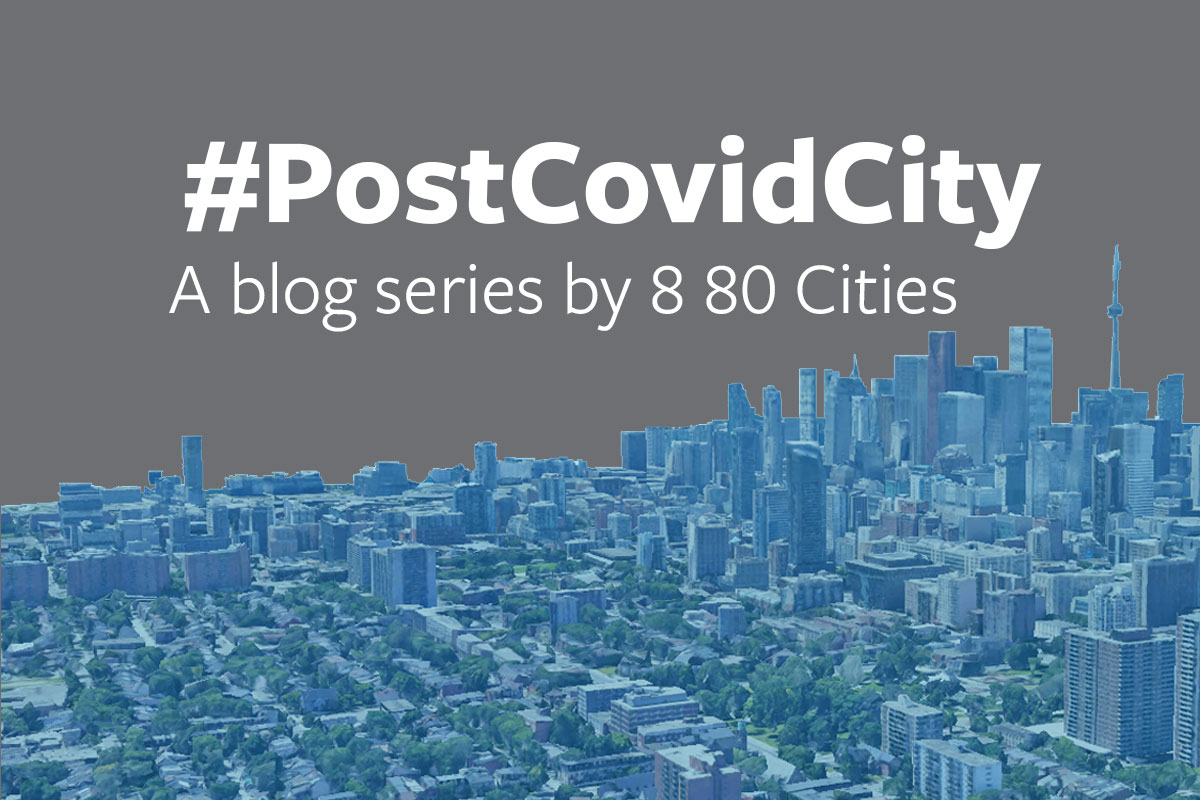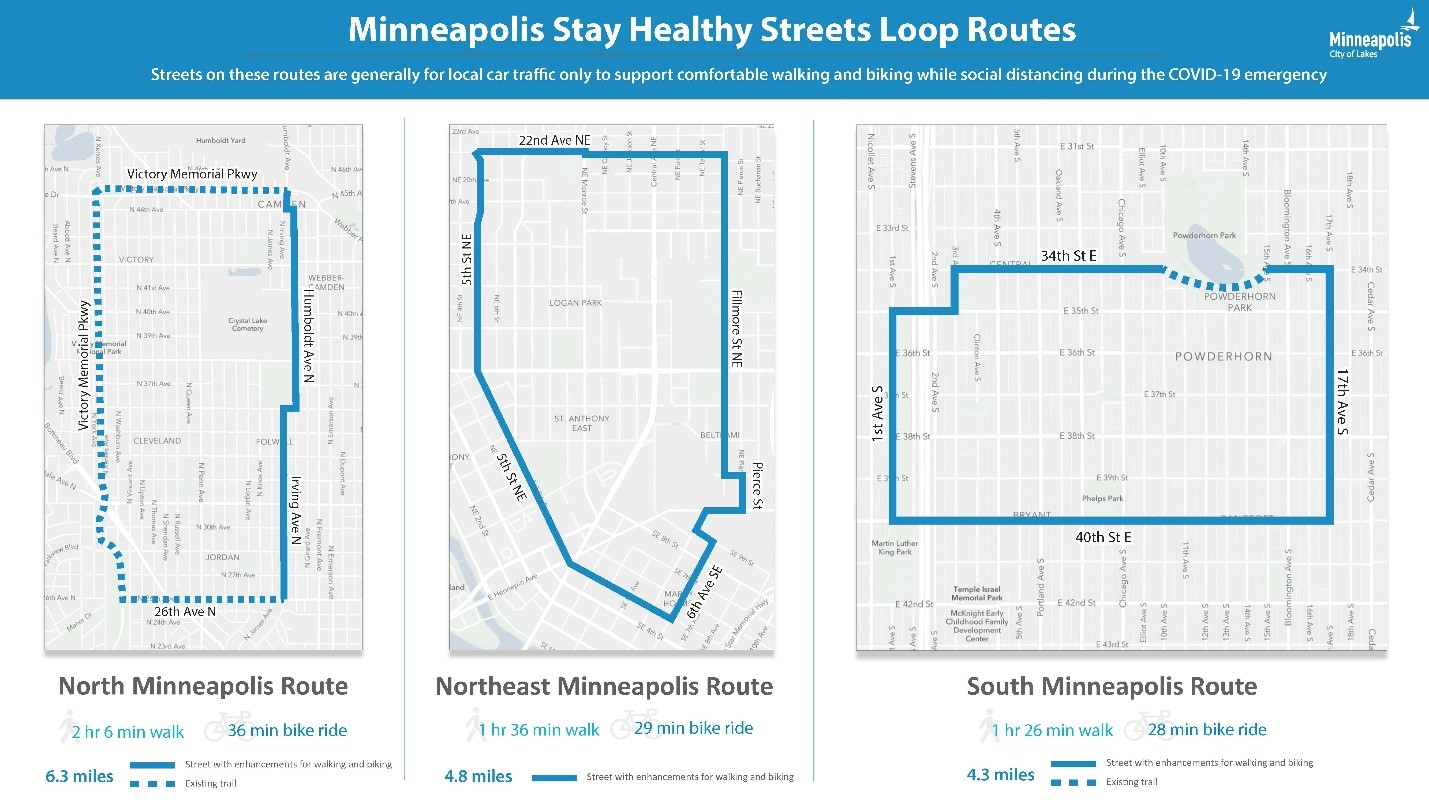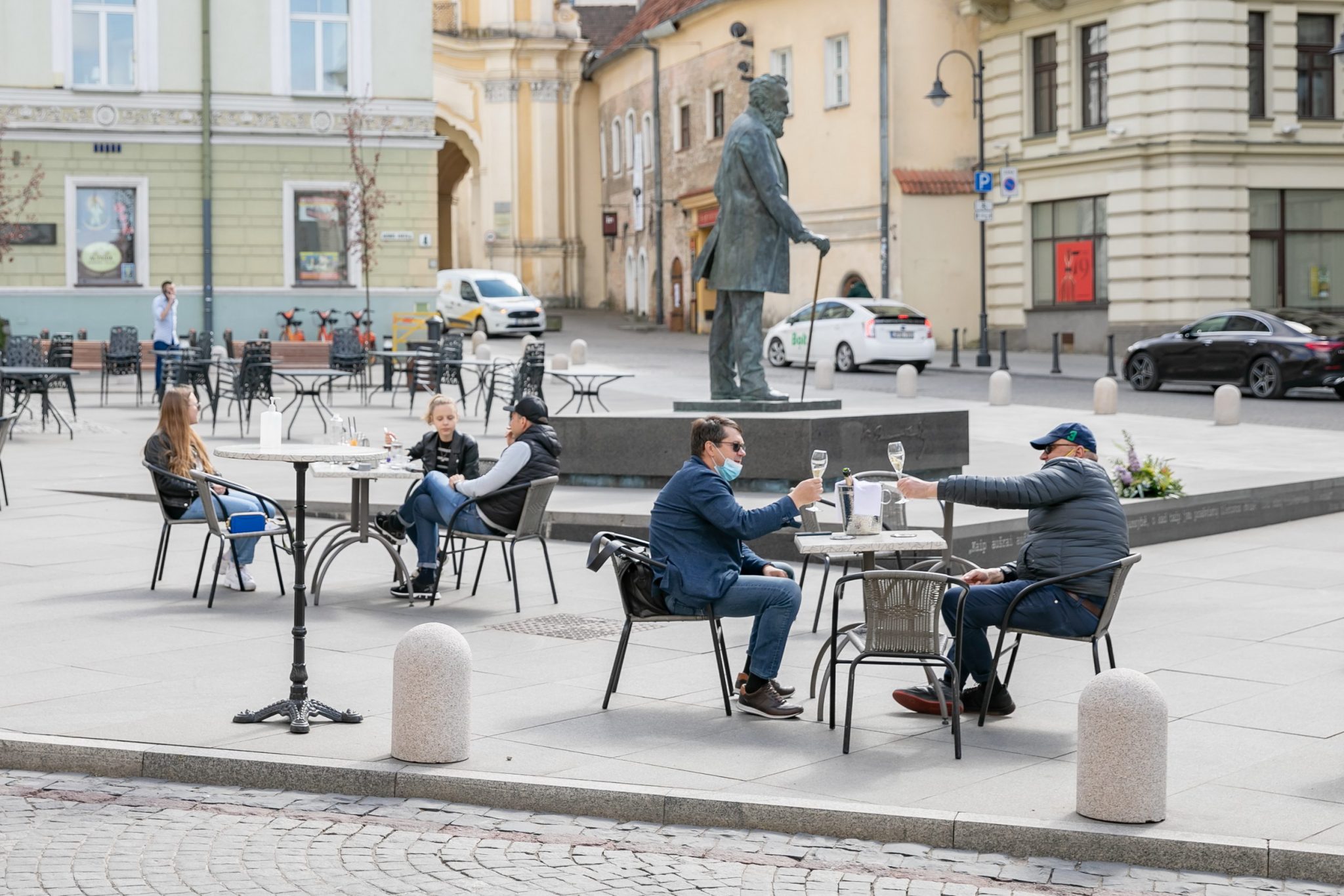
08 May #POSTCOVIDCITY: Observations on Emerging Global Trends
#POSTCOVIDCITY is an 8 80 Cities blog series exploring the impacts of COVID-19 on city-building and public space.
At the time I am writing this, the reported infection rate of COVID-19 crept over 3 million globally. The scale of this event lacks words to describe it but, in many ways, it resembles a hurricane and if I may carry on with the metaphor we are currently in the eye of the storm. Those of us not on the frontlines, trying to stay safe at home, are tasked with gauging the scope of the aftermath. COVID-19 is shaking the core of the systems, institutions and relationships that make up our cities. It is bringing to light our cities’ true strengths and their weaknesses and in turn, presenting us with a unique opportunity to improve upon them.
If the spread of COVID-19 is the result of globalization, that same connectedness can be leveraged as an asset. In recent months, the global medical community has galvanized around finding a cure sharing data and collaborating across borders and cities can do the same. As this pandemic moves across the world, we have the benefit of learning from the different strategies and policies utilized by different cities. The following is a collection of emerging global trends that might suggest how we move forward into a post COVID city.
1. Public space responds to the ever-changing needs of people
Almost overnight, Central Park’s Great Lawn became a field hospital and Bogota installed 35 kilometers of emergency bike lanes by mirroring the route of Transmilenio, Bogota’s rapid bus system. Cities around the world are turning to public space to iterate rapid responses to the unprecedented challenges caused by COVID-19. This adaptability will continue to be relevant as cities begin to open. Our pre COVID-19 infrastructure falls short in providing the space required to maintain physical distance, but rapid prototyping, pilot projects and tactical urbanism can offer solutions.
Tactical Urbanism and Rapid Prototyping
At the early stages of the pandemic it became clear that medical staff were going to be short on supplies like ventilators, masks and face-shields, at which point the ‘maker’ community galvanized to create open-source solutions. In 8 weeks, one Facebook group grew to 73,000 members and created 840,000 medical supply items distributed around the world. These tactics and energy can carry over to prototype solutions in public space.
One of our long-time partners and tactical urbanist trailblazers, the Better Block Foundation, was one of the many maker spaces that has contributed to the creation of medical supplies. They also helped transform a restaurant into an open market using “wiki-furniture” market stands and built a parklet in Dallas that provides sufficient seating and space for physical-distance. In their website, The Better Block shares up to 12 different open source designs that can be CNC cut and assembled into everything from park benches to outdoor markets. Municipal governments can support and encourage these types of initiatives by relaxing bylaws and waving fees, and bring needed seating to public space, create pop-up parks in communities that lack access to outdoor space and help small businesses create new offerings.

Walk/Bike Networks and Circuits
The World Health Organization has recommended that “Whenever feasible, consider riding bicycles or walking” and from the early stages of the pandemic people have. In March, the demand for New York’s bike-share, City Bike, grew by 67%. People are turning to bikes to avoid poorly ventilated/crowded buses and subways. Cities from Paris to Minneapolis are stepping up to this increased demand by quickly opening miles of road-space.
Minneapolis’ unique approach focuses on health. Their Stay Healthy Street Loop Routes leverages existing parkways to create full circuits for Minneapolitans to stay active. Their strategy communicates the estimated time it takes for someone to walk/cycle the full course (between 1.5 – 2hrs). This is particularly important for older adults as data suggests that they are more likely to walk, and walk for longer, if walkways make a complete loop.
Paris on the other hand is taking this opportunity to accelerate the installation of their already ambitious biking network plan. Mayor Anne Hidalgo’s plan to make every street cycle-friendly by 2024 is getting a boost to provide relief for the expected influx of car-traffic once the city opens. If Wuhan is any indication of what car traffic will look like post lockdown, they are right to do so, the Chinese city saw a surge in car traffic after opening up.
Whether providing essential workers a safer way for them to move around during lock down like Bogota, creating space for people to meet their recommended daily exercise like Minneapolis or creating bike-lanes in anticipation of an increase of traffic like Paris, walk/bike-ways are proving to be an effective cost-efficient solution to the urban challenges posed by COVID-19.

Sidewalks
The reclamation of street-space is not just for the movement of people, it is also for the enjoyment of public space and to support the local business community. Vilnius, the Lithuanian capital, is allowing restaurants and bars to set up tables in public space, free of charge. The measure is meant to allow businesses to maintain physical distance while turning the city into a “vast open air cafe”. This is not only welcomed news by the hard-hit restaurant industry, but also to Vilnius residents craving to spend time as temperatures rise.

3. Educate Not Police
At the onset of this pandemic, cities began implementing lock-down measures with varying degrees of rigidity and enforcement. When it comes to parks, some municipalities like Montreal and Vancouver encouraged people to get out and exercise safely. Vancouver even created an educational video, while other cities like New York and Ottawa opted to hand out tickets of up to $2000. The latter strategy brings up deep human rights and equity concerns as it is well documented that police departments in cities everywhere from Toronto to New York to Bogota, disproportionately target, interrogate, ticket and arrest racialized communities, LGBTQ2S+ people and people experiencing homelessness.
Some experts warn that a punitive approach can push people to break physical distance indoors rather than outdoors and thus increase risk of contagion. While advocates like the Canadian Coalition to Reform HIV Criminalization, notes that the experience of the HIV pandemic shows that resorting to criminal law can lead to human rights violations.
Physical distancing asks people to become active participants on how a city utilizes health resources by helping control the spread of the virus and flow of patients that enter the hospital system. This message needs to be amplified and resources can be more aptly placed in developing creative and diverse educational campaigns to generate community collaboration, and by providing the resources necessary for people to stay at home. This is increasingly relevant when considering that physical distancing measures might last up to a year.
4. Urban Agriculture Blooms during COVID
One of the gravest concerns during this pandemic has been the stability of cities’ food supply chain. As a response, municipalities, big and small, have begun to encourage and accelerate local food production. Smaller cities like Victoria B.C., and Brampton Ontario, are opting for providing resources to residents. Victoria has reassigned park staff to grow up to 75,000 seedlings to give to residents in May and June, while Brampton is providing free seeds and soil to residents who are willing to grow food to donate to the local food bank. More than 11,000 people have already signed up for Brampton’s program.
More densely populated metropolises, with less access to land like Singapore, are looking at utilizing vertical gardens, green roofs, vacant sites and industrial areas to ramp up local food production. The city-state which currently import 90% of their food, is providing a $21 million (US) grant to “support production of eggs, leafy vegetables, and fish in the shortest time possible.”
5. Prioritizing the Most Vulnerable
This pandemic makes it clear that our societies are as strong as our ability to care for the most vulnerable. COVID-19 is disproportionately spreading across segments of our most marginalized communities, long term care homes in Canada, Black, Latino and Indigenous communities in the US, and densely populated favelas in Brazil for example. The reality is that so long as the virus remains in any sector of our cities it poses a risk to everyone. If we want to overcome this virus and grow into more resilient cities, we need to address the fundamental societal issues that are creating marginalization in the first place.
We at 8 80 Cities are committed to following and sharing insights along this journey in a and towards a #PostCovidCity. Click here for other posts in our #PostCovidCity blog series.



